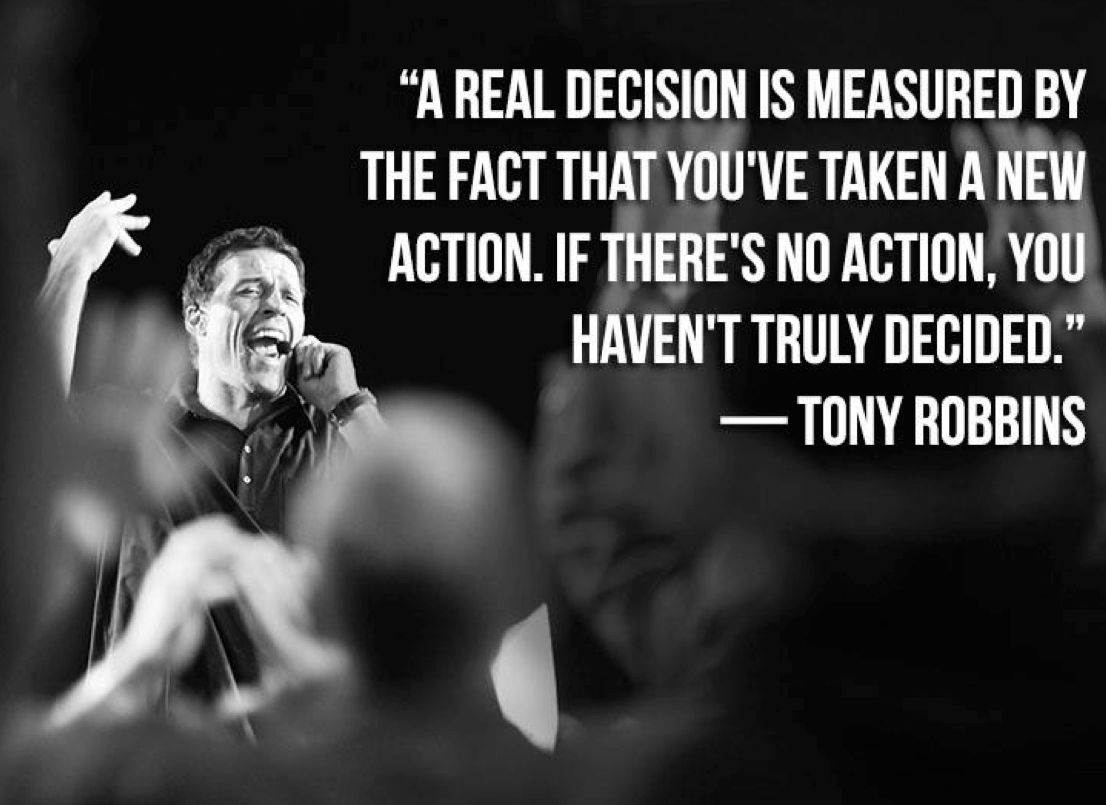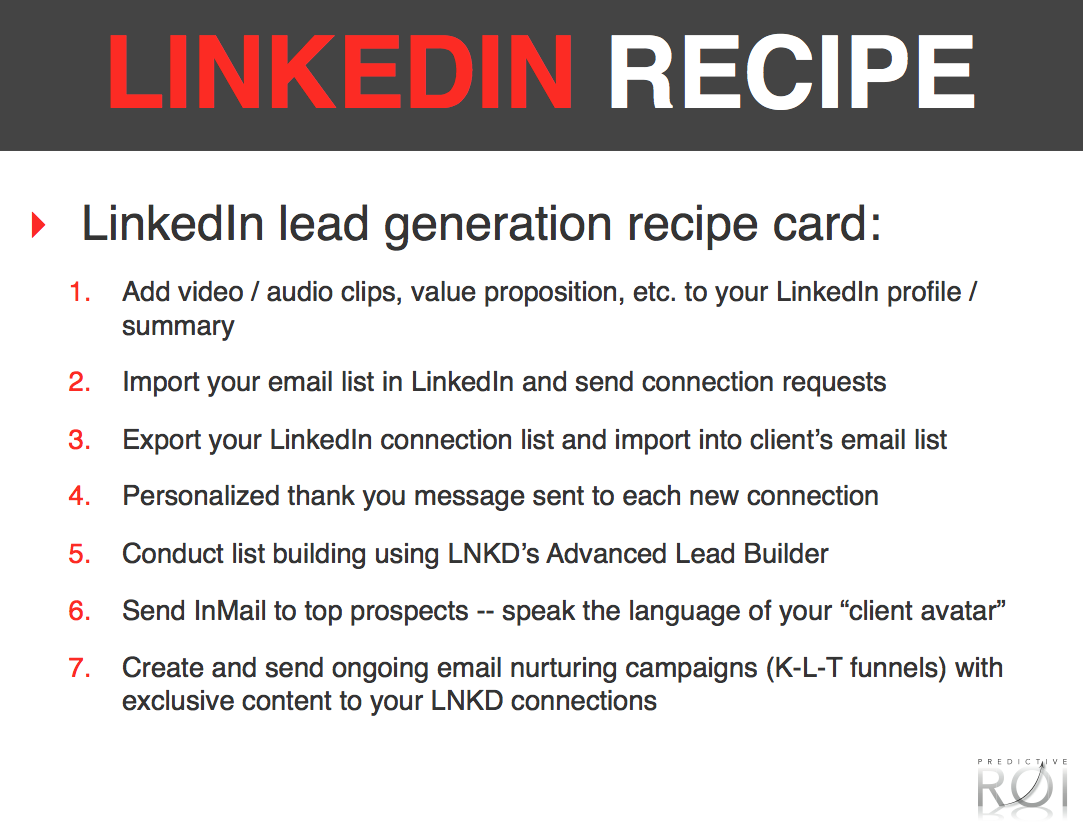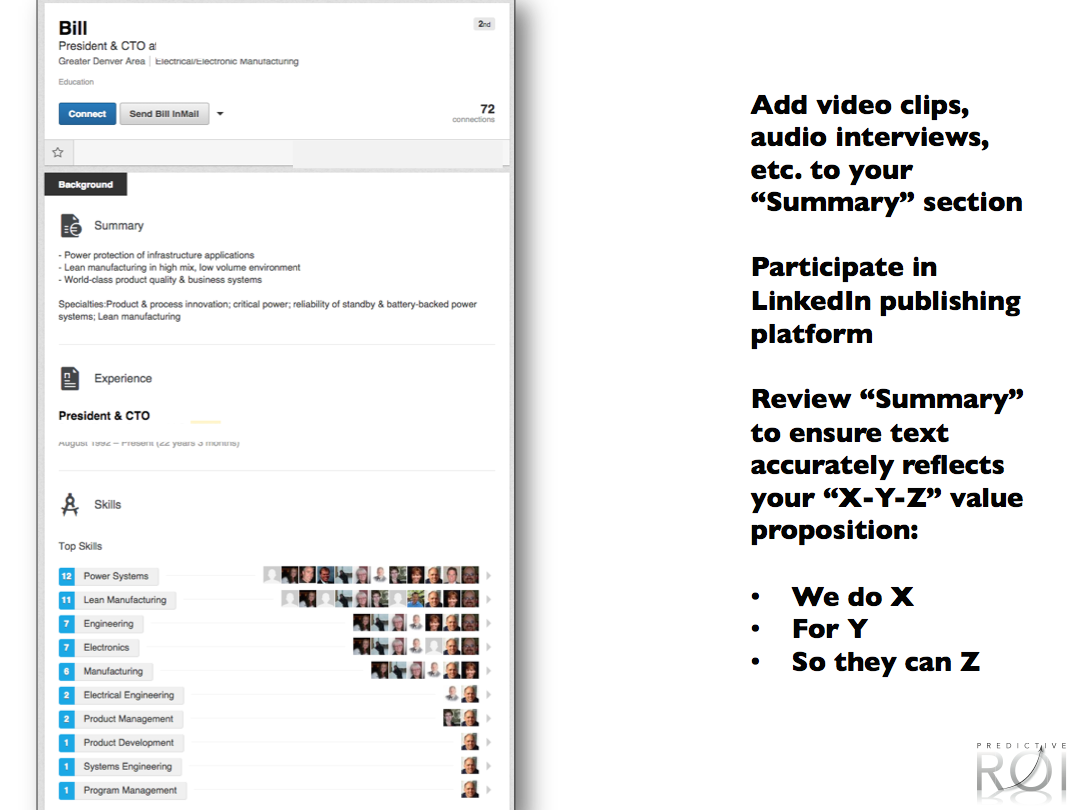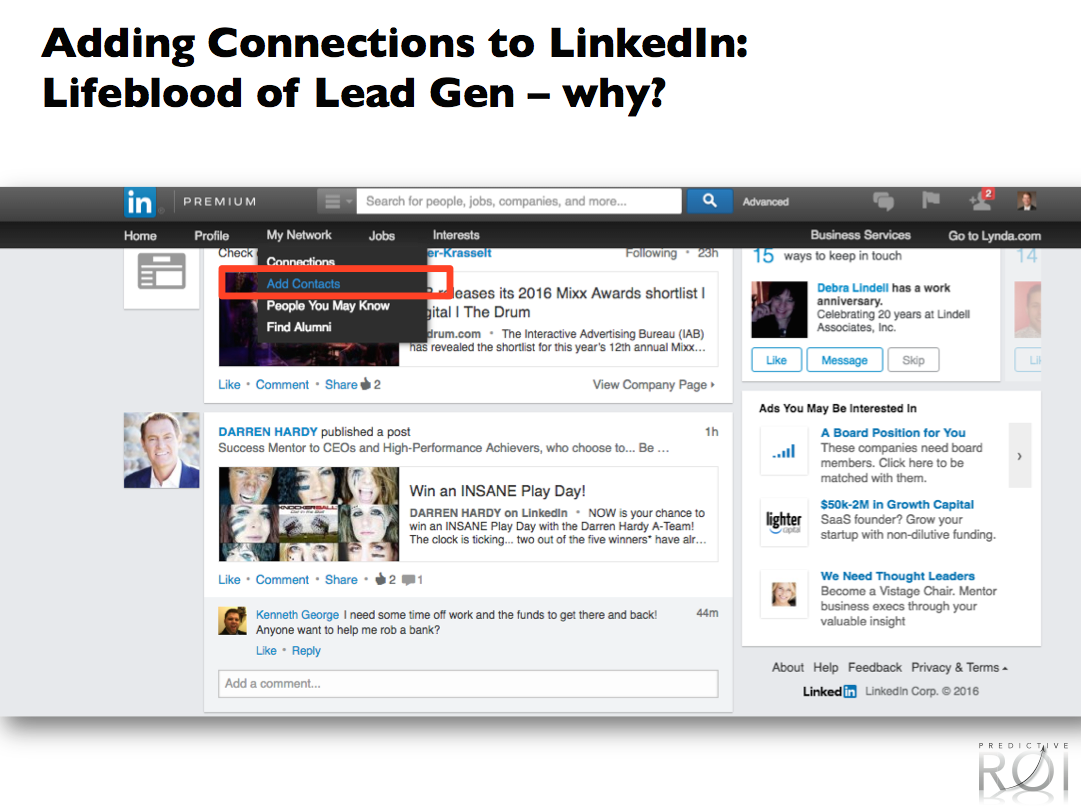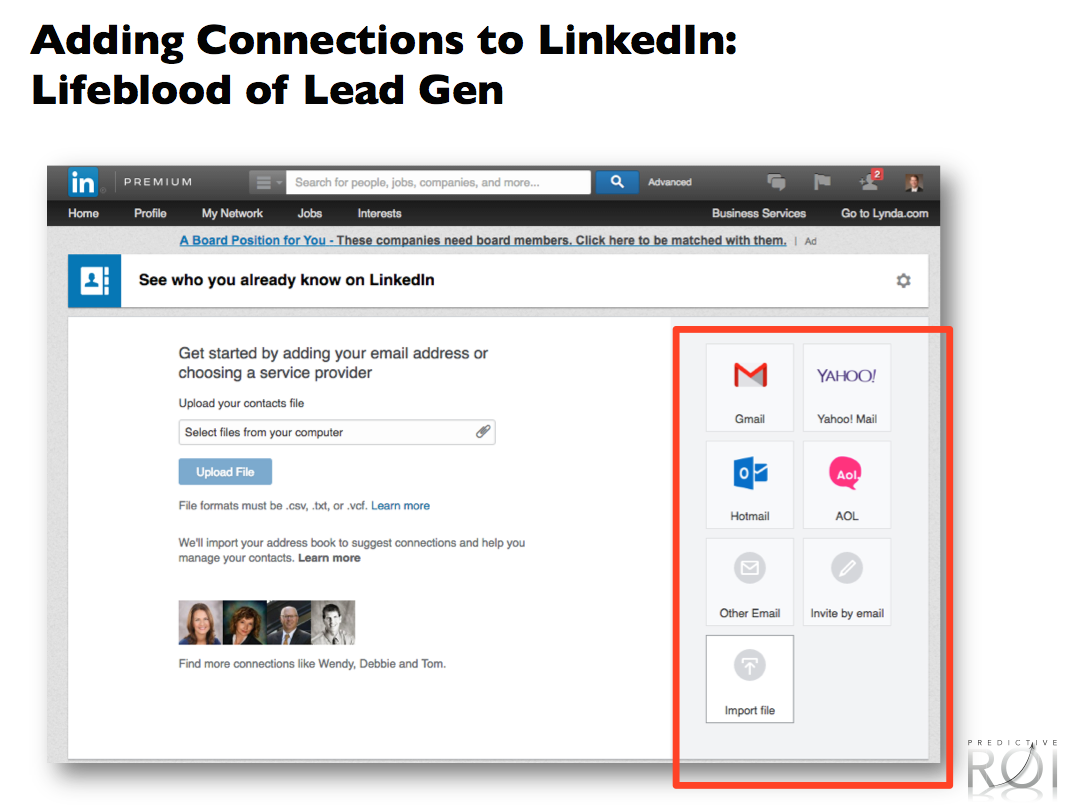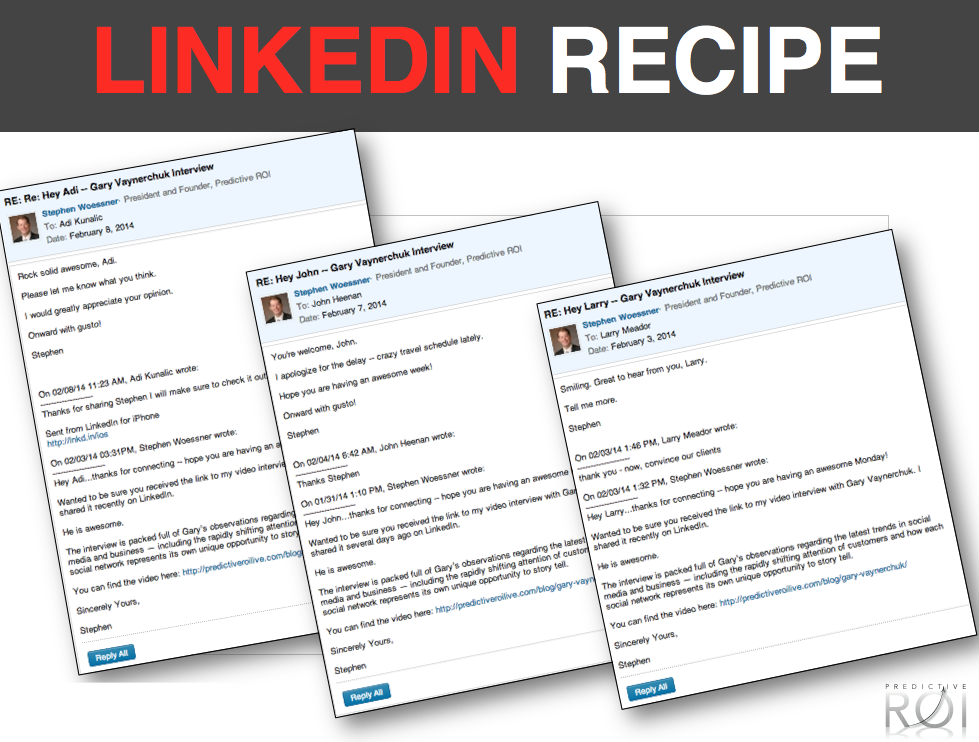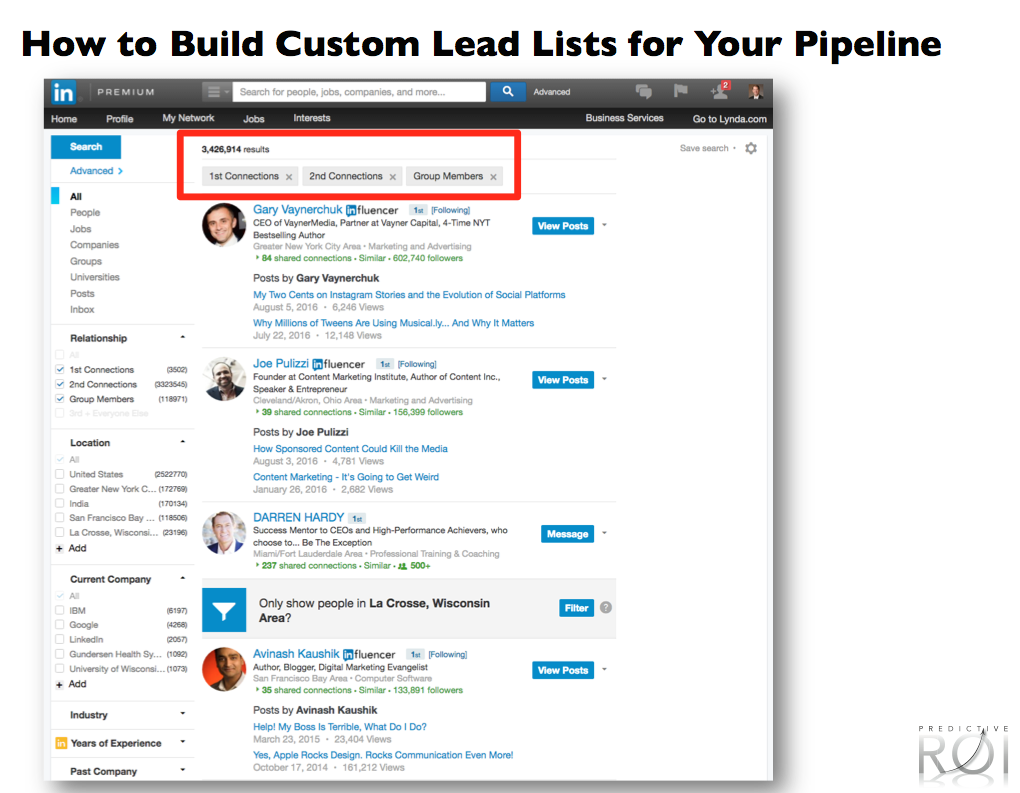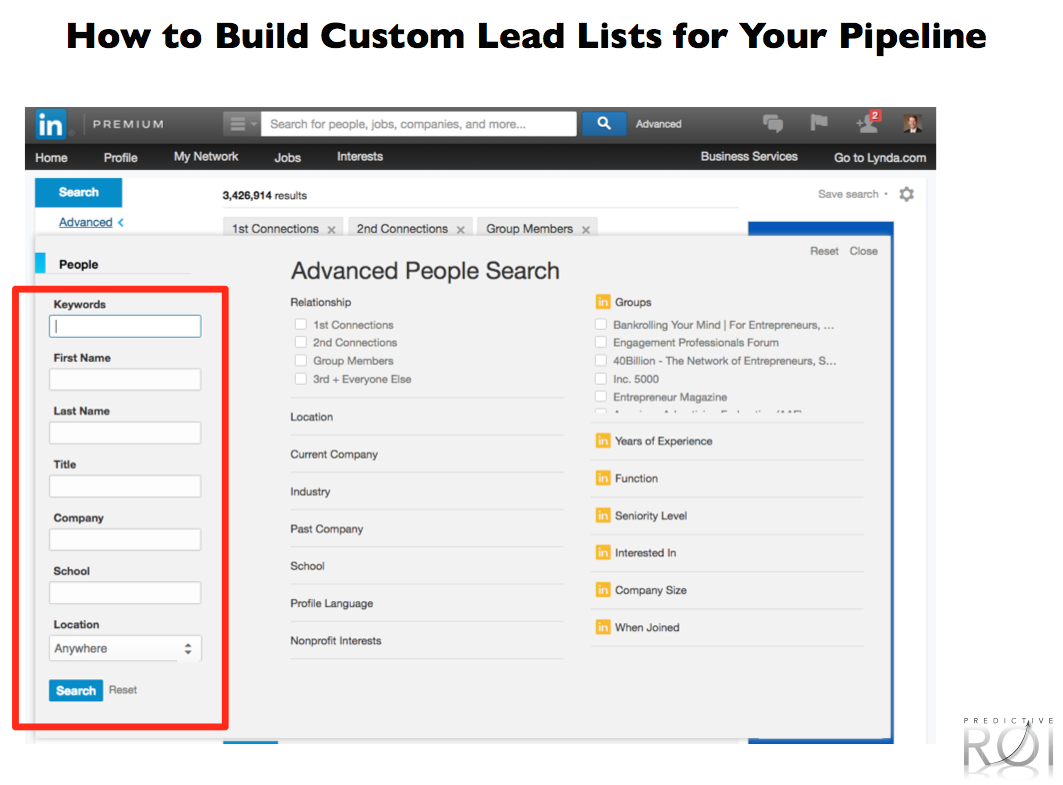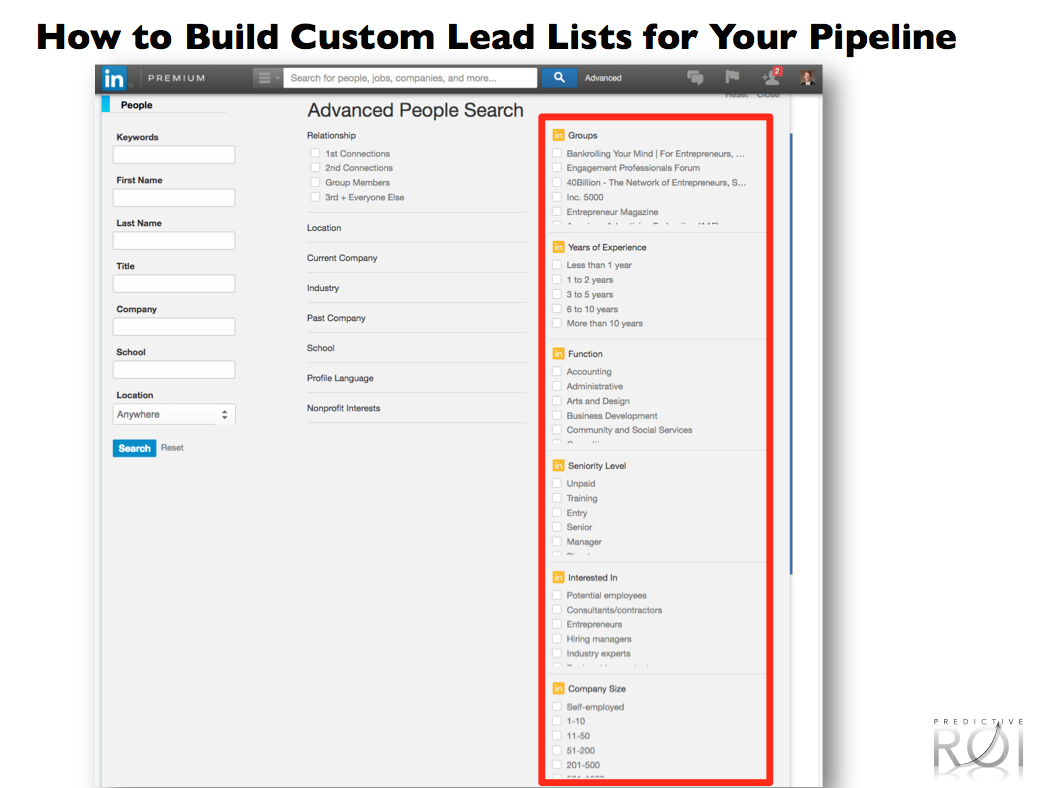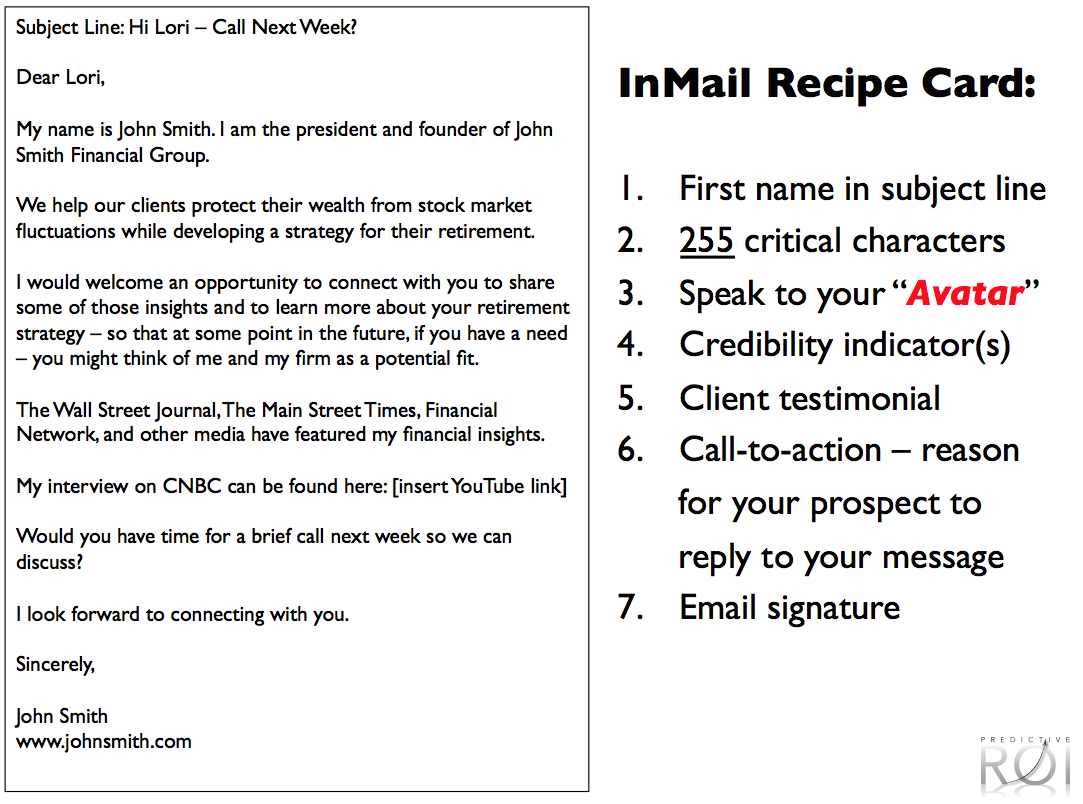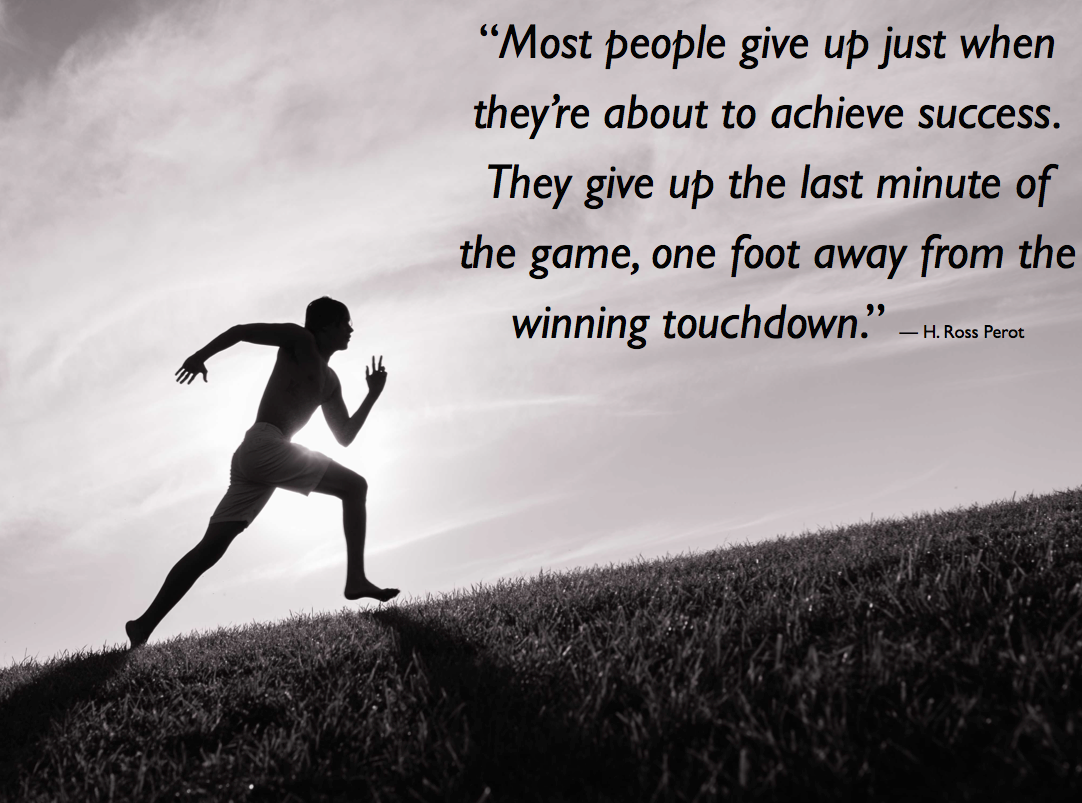How to fill your sales pipeline, with Stephen Woessner.
Episode 298
Stephen is the CEO of Predictive ROI and the host of the Onward Nation podcast. He is the author of two bestselling books, speaker, trainer, and his digital marketing insights have been featured in SUCCESS, Entrepreneur, The Washington Post, Forbes, Inc. Magazine, and other media.
Subscribe to Onward Nation!
Good Morning Onward Nation…I’m Stephen Woessner!
In case this happens to be the first Onward Nation episode you are listening to — I wanted to welcome you. Each day, here at Onward Nation, we have this incredible opportunity to sit down and learn from some of today’s top business owners in the country — and around the world — and then to be serve as this conduit — to share all that we learn during the interviews directly with you.
What an incredible honor it has been — and to see that Onward Nation is now listened to in over 100 countries around the world is so much more than we could have ever imagined. So thank you, Onward Nation — thank you for being you — thank you for all of the support — all of the encouragement — and for letting us know — thumbs up or thumbs down what you liked — and didn’t like. Every day — you help us get better — we love your messages on Facebook, LinkedIn, Twitter — and email, too.
Keep them coming!
Again, if you are listening today for the first time — or if this happens to be the 298th episode you have listened to and studied — I appreciate your time more than you will ever know. Thanks for being here.
Okay, let’s jump into today’s solocast. Just a warning here — isn’t that a great way to start off a discussion?
We’re going to go really deep today into a topic — both strategic and super tactical during this solocast. And brace yourself — this may end up being the longest solocast I have ever recorded to date — but honestly — I have added so much value into this episode — it will be absolutely worth your time.
I am going to share — in absolute full transparency — the step-by-step recipe my team at Predictive ROI uses to generate highly targeted and qualified leads for clients.
The recipe delivers a 10-20% response rate — meaning — when we reach out to prospects on behalf of our clients — we receive a response from prospects 10-20% of the time.
Rock solid awesome.
And I am going to share with you each and every step — what we do — how we do it — why we do it — and the results you can expect along the way if you follow the same recipe for success.
The primary tool or platform we are going to focus on today is LinkedIn. I will explain why — from a demographic perspective (especially if you own a business-to-business service firm — meaning your customers are other businesses versus retail, consumer packaged goods, etc.) — why making LinkedIn a cornerstone of your lead gen strategy is an absolute must.
But before we dive into the tactical…I want to make sure you get your mindset right. That you are thinking proactively — that you are open to new ideas — and even some ideas that might push you a little bit.
I am going to help get you there by sharing a lesson I learned from Tony Robbins. Tony has had a significant impact on the trajectory of my career, our company, and it is so inspiring to see his impact on the millions of people around the world that he influences through his seminars and personal development courses.
I spent some time with Tony at a private closed – super intimate event one of our clients was hosting — and during those conversations — Tony emphasized how:
Wow…when I heard those words…they hit me — they drove through me — right to my core.
I felt guilty — a bit embarrassed — and even empowered at the same time.
I felt challenged — and maybe a little bit angry thinking, “Who does he think he is calling me on the carpet like that.” But once I settled down…and took my ego out of the equation…I realized…he was right.
For example…I know how to get 6-pack abs. I know the exact recipe. I know what I need to eat and I know the specific exercises — the time of day — the intensity — and duration — and the overall schedule.
I even know how to specific track my progress beyond just weighing myself each day. I have had those daydream fantasies of walking on the beach with abs a blazing — and yet — despite all of the knowledge — my slacks are more snug than I would like.
Why?
Because I haven’t made a true decision to make a change.
Instead…I continue loving Pop Tarts way too much. But I know the power to change is within me…I have had 6-pack abs before…and I know the path to getting there.
And all that is necessary is for me to decide to make the change…to make a true decision…to make it a vital priority.
And when I do…I will be on that path.
So why am I sharing this with you and how is it relevant to today’s lesson?
Because your success — or the success of your team in implementing the lead gen recipe I give you this morning will largely depend on your decision — your decision to learn — your decision to jump into the deep end of the pool instead of dipping your toe in — your decision to continue to grind it out and revise the outgoing message until you get it right — your decision to hit send just one more time even though you are tired.
YES!!! You need to truly make a decision to work this process — and when you do — great results will come your way.
So let me give you a couple of warnings as we begin to go down the path for today’s lesson.
As I am sharing the recipe with you…you might say to yourself, “Oh, I already know that.”
Please don’t cheat yourself by saying that…that voice…that voice is the imposter syndrome rising up and trying to keep you from doing something new by making it sound like something you already know.
Push through.
Instead, if and when you hear that voice…push back and say to yourself…
“Yes, I may have heard something like this before…but…1) have I mastered it…and 2) can I leverage it greater?” These are much better questions because there is always something to learn — there is always another way to go about a problem — to find a solution.
As Stephen Covey taught us — find the Third Alternative. So use your creativity, Onward Nation…push through the imposter syndrome and apply this recipe.
Now, why is this lead gen recipe so important to deserve an entire solocast devoted to it? Because there is a gaping hole that exists in most businesses – we have all felt it at one point in time.
And perhaps you are feeling it right now.
And that hole is the lack of leads and well-prepared prospects that can be cultivated and converted into better clients and customers – clients who bring with them — at their disposal — bigger budgets for the products and services that you sell.
And if you are feeling that pain right now…I know how you feel.
I have felt the pain and pressure of it, too. We all have in our businesses. Not a single business owner is — or has been — immune to that feeling.
The good news is — unlike the photo of the firefighter — the gaping hole you are fighting is not a losing battle.
It’s a battle you can win – it is a gaping hole you can fill when you apply the right tool, process, or system.
And thankfully, you won’t have to change everything about your business in order to fix the problem.
In fact, you probably only need to optimize what you are doing…and maybe make small 10% adjustments to your overall strategy.
I think Warren Buffett had it right when he compared running a business to flying the space shuttle.
At any given time, there are only a couple of levers that need to be pulled — and a couple of buttons that need to be pushed…everything else can be ignored. So don’t get overwhelmed — don’t get frustrated.
My caution to you is…forget the emotions that you are feeling right now when sitting in the cockpit of your business.
There are only a vital few things that you truly need to focus on in order to fill the gaping hole – and to fill your sales pipeline.
And I am going to give you the right tools, the right system.
I will show you which levers to pull and which buttons to push to fill your sales pipeline and it will be powerful for you.
I believe the great Archimedes had it right when he so wisely said…
So, what will your lever and prop be?
You guessed it, Onward Nation…chocolate cake.
I know – chocolate cake sounds silly, right?
But let me explain why this metaphor makes so much sense.
Let’s say that I happen to make the world’s best chocolate cake. The absolute best.
And I have spent the last 20-years perfecting my process.
And then you come along and asks me to teach you how to make my cake – the same cake – the one that took me 20-years to master!
How could this be possible?
You, Onward Nation, may not have spent the same 20-years perfecting your baking skills.
How could someone other than me even come close to duplicating my chocolate cake?
What would I need to give you to prepare you – that could ensure your success?
For one…I would need to give you my recipe, right?
Because with my recipe, you can see my full process.
You can see the strategy behind the chocolate cake.
With the recipe, you begin to get the overall picture of what needs to happen.
But, what else? What else do you need beyond the recipe?
Yep, you need the actual ingredients!
With both the ingredients and the recipe, you now know how to put all of those things together – in the right order – in the right amounts – at the right time – and how long to bake the cake and at the right temperature.
And if you follow the recipe – and if I didn’t accidentally leave anything out of the recipe card that I gave you – you now have the ability to duplicate my success.
In fact, duplicating my success becomes easy – IF – you are willing to make the EFFORT.
So here’s the key…with the right recipe, you are able to compress the process of learning 20-years of my knowledge down into the audio of this solocast.
Learning and then compressing the outcomes into a shorter time period is one of the powerful benefits to getting the right training and aligning your agency with the right mentors.
So, during our time together today…I am going to share with you 1 slice…or 1 very powerful step out of our full 16-steps of what we call The Predictive ROI Method.
It is our patent-pending process.
And if you apply this one step…you fill your pipeline with better clients – with bigger budgets – and budgets that deliver more sales and customers to your business.
And I should also say…that if you apply what you have learned today…you can be assured that your competitors will not be applying the same process.
How can I be so sure?
Because I own it. It is our proprietary recipe. And I am sharing it with you, Onward Nation – but only you.
So let’s dig into the recipe.
For the lack of a better term, we call it LinkedIn Lead Gen.
First…some quick words as to why we love LinkedIn as much as we do…and why it should be the cornerstone of your lead gen strategy.
There are approximately 433 million LinkedIn members — yes, 433 million. Hugely valuable community — just ask Microsoft — they seem to agree since they recently acquired LinkedIn for $26 billion in an all cash — yes, all cash — deal. Wow!
Next…want to guess the average number of LinkedIn connections for a CEO? 933. Interesting.
Why?
Because if 933 is the average — some are higher — some are lower — but you tend not to get 933 connections by accident — you work at it — so if someone has 933 connections — it is likely on purpose.
Meaning, LinkedIn is likely a platform that he or she values — and a place where they spend time — that that is great news for you.
And yes, you should be reaching out to the CEO — the top decision maker at your prospect client — but that can be a topic for a completely different solocast. But, in the meantime, if you want to read an excellent book on the subject, read “Selling to VITO” by my good friend, Tony Parinello.
He is the master at selling to the top.
Okay, next…some additional insight into why you should care about LinkedIn…27% of all members are between the ages of 30 and 49…and another 24% are 50 to 64 years old…and 13% are over the age of 65. So to say that another way…over 64% of LinkedIn members are over the age of 30…and 38% of total members earn $75,000 or more.
Bottom line…there are 433 million people on LinkedIn…64% of them are over the age of 30…and 38% earn more than $75,000 per year…with the average CEO having 933 connections on the platform.
All of that speaks well to your opportunity of finding and connecting with the prospects who can drive your business forward, Onward Nation — and to fill the gaping hole of qualified leads you may be feeling right now.
So let’s press forward by reviewing the seven ingredients within our LinkedIn recipe.
Our LinkedIn lead gen recipe consists of seven core ingredients, and they are:
Ingredient #1: Improve your LinkedIn profile by adding video / audio clips, value proposition, etc. to the Summary. Again — we will get tactical here in just a minute — and I will give you tangible visual examples for each ingredient.
Ingredient #2: Import your existing email list in LinkedIn and send connection requests.
Ingredient #3: Export your LinkedIn connection list and import into your client’s email list.
Ingredient #4: Personalized thank you message sent to each new connection
Ingredient #5: Build your prospect list using LinkedIn’s Advanced People Search tool.
Ingredient #6: Send InMail messages to your top prospects — and be sure to speak the language of your “client avatar.”
Ingredient #7: Create and send consistent nurturing email campaigns with exclusive content just for your LNKD connections so they feel valued to be part of your growing community.
Okay, now that the high-level view of the forest is complete — let’s dive in and go tree-by-tree so you can see all of the tactical ingredients of this recipe.
Ingredient #1 is all about getting ensuring that your LinkedIn profile is not just good — but that it is excellent. Why does this matter? Because when you send InMail messages as part of Ingredient #6…the very first place your recipients — your prospective clients will go to learn more about you — is your LinkedIn profile.
And if it is sparsely populated with value proposition, you connections count is low, you haven’t taken the time to include a quality profile picture, you have zero recommendations, etc. — then it looks like you don’t care — and they won’t respond to you. Maybe your InMail was just spam — you are ignored — and they move on.
Or, if you have taken the time to include audio and video clips, Slide Shares of recent presentations you delivered, links to articles you have written recently, blog posts, recommendations from current clients — it not only takes advantage of all the profile building tools that LinkedIn provides you — but — you also visually demonstrate your thought leaderships and expertise to your prospective clients — and that is a very good thing. Now when they receive your InMail message as part of Ingredient #6 — they move from skeptical questions like “Why did she send me this?” to “Oh, interesting…they would like to talk with me? Awesome.”
Think of your LinkedIn profile as your personal landing page and it needs to be excellent — just like everything else in your business.
If you would like a tangible example — check out what my team has built for me on LinkedIn…look me up…send me a connection request…and you will see illustrations of each step I just shared with you.
Let’s move on to Ingredient #2 — import your existing email list into LinkedIn and send connection requests.
To make sure we are on the same page here — I am talking about taking your email list — the list you communicate with often — consisting of customers, prospects, maybe even vendors — people with whom you have a relationship — and then uploading that list into your LinkedIn account and inviting them to connect with you on LinkedIn.
But why?
First…when you increase your number of LinkedIn connections — your network and credibility grows. Instead of having several hundred connections — you move to several thousand. And the next time a prospective client checks out your LinkedIn profile — they may see the number — and be impressed.
Second…your number of 1st-degree connections in LinkedIn impacts the number of prospects you will be able to see during Ingredient #5 of this process — when you use LinkedIn’s Advanced People Search. To cement this into place — let’s quickly review what LinkedIn defines as 1st degree, 2nd degree, and 3rd-degree connections.
A 1st degree connection on LinkedIn is — let’s say you are listening to this solocast — you like what you hear — and decide to send me a connection request on LinkedIn — and by the way — you should totally do that — anyway — when I receive the request — I personally accept it. And so you and I become 1st degree connections.
Now, here’s what’s interesting. My nearly 4,000 1st degree connections instantly become your 2nd-degree connections. And all of my 2nd-degree connections become your 3rd-degree connections.
Again, why is that important? Well, back to my connections…my nearly 4,000 1st connections extrapolates out to a total network of 16 to 17 million people when considering 1st degree, 2nd degree, and 3rd-degree connections. That means…I can search through a huge number of people during Ingredient #5 in finding our ideal prospects we might want to reach out to.
So, Onward Nation, building your number of 1st-degree connections is essential to your success on LinkedIn — and uploading your email list and sending out connection requests is a quick and easy way to boost your connection count — and the size of your network — with a couple mouse clicks. Very powerful.
Here’s how you complete the step. Roll your mouse over the “My Network” section of the LinkedIn menu…and then the option “Add Contacts” will appear.
Then click “Add Contacts” and you will see a screen with options to connect LinkedIn with your email service — definitely do that — as well as the option to upload your email list and send out a massive number of connection requests all at one a couple of clicks.
Moving on to Ingredient #3: You should export your LinkedIn connection list and import into client’s email list.
This might seem a bit backwards after you just uploaded your email list into LinkedIn — why am I now recommending that you reverse the process and export the list back out and import it into your email list?
A couple of reasons:
First…LinkedIn is the only social media platform that gives you the ability to export the contact and profile details of your connections — and that is just plain awesome!
Second…the email address someone used when getting onto your email address may be different than the email address they use within a professional community like LinkedIn — so you should have both inside your email list. This gives you the ability to cross-pollinate — ensure your high-quality email content that you will be sending (ahem — only high-quality content here, Onward Nation) — will be able to reach them via LinkedIn posts — as well as via email.
And third…there may be some hundreds of people who connect with you via LinkedIn — and not know how to signup for your email list. No problem…if you are importing and exporting on a consistent basis…you will solve that problem to ensure you are fully covered.
Okay, onto Ingredient #4. Do you feel the momentum starting to build, Onward Nation?
You just beefed up your profile so it is ready to be checked out by the highly targeted prospects who will soon be coming your way. And then you expanded the size of your network so you have tens of thousands, hundreds of thousands, or maybe even millions of people you can sort through to find the right prospects.
Rock solid awesome!
With ingredient #4…I recommend that you send a personalized thank you message to each new connection — and — that the message includes something of value — and — it is a personal message. Not one of those automated messages that feels like a heavy-handed sales pitch as soon as you connected with someone.
Ugh — those are awful and I tend to remove someone as a connection as soon as I receive one because I feel as though I got duped into a sales pitch.
Yack. We will not be doing that with Ingredient #4.
Here are several examples of thank you notes my Predictive ROI team used following the interview I did with Gary Vaynerchuk — our guest for Episode 42 of Onward Nation.
When someone connected with me on LinkedIn, I sent a personal thank you message to my new connection — with a warm hello and thank you — some personalized context so he or she knew that the message was just for them and then a link to the video.
Now, here is a little scaling secret, Onward Nation — you — you personally — do not need to be the one who sends each of these messages.
You can and should delegate this to a member of your team — maybe even an unpaid intern on your team — and my team at Predictive ROI has been blessed to have worked with 24 rock star interns who were assigned this project as well as other front line — forward facing activities.
And if you’re thinking “unpaid interns — he is out of his mind — there’s no way we could recruit unpaid interns in this market.” Let me just say…we have worked with interns who were students at Duke University, Ohio State, Purdue University, University of Northern Iowa…and many other schools around the country — all unpaid. If you want our recruiting recipe — go take a listen to Episode 137 — because I share all of the step-by-step of how we do it.
Full transparency, Onward Nation.
Okay, back to lead gen and Ingredient #5. How to build your prospect list using LinkedIn’s Advanced People Search tool. From within this powerful tool…you will be able to search through your entire network of connections using several powerful filters, such as:
- Keywords
- First Name
- Last Name
- Title
- Company Name
- Location — or mile radius from your office or location
And then you can take it deeper and make your searches more refined by including your prospect’s years of experience, their function within their particular company, seniority level, what they are interested in, company size, and so forth.
By taking the time to get specific about your prospect — you leverage LinkedIn’s database — to deliver back to you a list of prospects who match your criteria and you eliminate the time wasting of sending direct mail to a purchased list and hoping for a better result outcome than the last campaign.
So let’s say that in your first attempt — LinkedIn returns a list of 100 people. You can then click into the profiles of each person (see — Ingredient #1 is really important) and from their profile — you can better determine if he or she is a good fit for your lead gen efforts.
If yes, add the person and their details to an Excel or Google Sheet so you can keep a running list of who you have reached out to…and no…LinkedIn does not offer any sort of automated CRM functionality.
This is tedious work — I get it — I completely understand — but — it is also where the rubber meets the road in the success of your business and it will fill your sales pipeline.
Okay, so I’m going to assume you did all of the work you needed to do up to this point. You have built a solid profile — you expanded your LinkedIn network by leveraging your email list — and being smart — to also reverse the process and cross-pollinate your connections back into your email list…and now…you have mastered the Advanced People Search tool with the result outcome being — a highly targeted prospect list — perhaps the most targeted list you and your sales team have ever had.
Now what?
Ingredient #6 is next. Crafting your InMail message and sending it to each of the people on the list you just created. There are seven sub-ingredients, if you will, that make up the InMail message…and they are:
- Include the first name of the recipient in subject line
- Your first 255 critical characters need to be awesome
- Speak to your “Avatar”
- Include credibility indicator(s)
- Include a client testimonial
- Include a call-to-action – reason for your prospect to reply to your message
- Include your email signature
Here is an actual InMail message — a template — you can use to create your own.
Please use it.
My Predictive ROI team has sent thousands and thousands and thousands of InMail messages on behalf of our client’s lead gen efforts — and the template we included in today’s Show Notes — is the result outcome of all that testing and hard work.
You will dramatically shorten your learning curve by using the template.
One last point about the InMail and the template you will see in the Show Notes — there is a reference to “speaking to your client avatar.” And yes, we have a recipe for that, too. If you go to Episode 208, I explain in full detail how to identify your client avatar — how to speak directly to him or her — and how to deliver value in the process.
Having and mastering this knowledge is a must in writing effective InMails.
And now we have arrived at our final ingredient…ingredient #7…creating and sending consistent lead nurturing content to LinkedIn connections. When you export your LinkedIn connection data — and then import into your CRM like InfusionSoft, etc. be sure to add the emails to a special list tagged as “LinkedIn Connections” or something else that lets you know these email addresses are super special.
This list represents your MVPs and your goal should be to create content just for them — exclusive — and then share it with them — letting them know it was created just for them — and that your connection means something to you — your connection is important — that you value their opinions — that you want to hear from them and how you can do better — and that you share your insights and expertise along the way in such a context that you are providing value that can be incorporated into their business straight away. So that when you do reach out to them to explore the potential of a business relationship — you are not reaching out to a stranger with a cold call — you are reaching out to someone who already knows you, already likes you, and may already trust you because you offered tremendous value first — and that is an awesome way to begin a business relationship.
Before we go…I’d like to leave you with a couple of important thoughts.
Now that you have learned the recipe – and have seen the typical result outcomes – there are two questions you and your team need to answer.
First…how will we take immediate action based on what you learned here today?
How will you apply it right away to fill your pipeline?
And that leads to the ultimate question.
Are you committed…or are you just interested?
Being committed means knowing exactly how much new business you are seeking, from what sources, and having a strategy in place to fill the pipeline to get it.
Let me tell you a quick story about Coach Nick Saban from the University of Alabama – who definitely represents the epitome of being committed.
Alabama is consistently one of the top teams in college football each year…and this year’s reigning National Champion.
Coach Saban’s reputation is one of precise detail and process.
And once he uncovers a “recipe” for success…he uses it over and over again.
But he also freely shares his secrets without fear that his competitors will be able to duplicate his results.
How is this possible?
Case in point…a good friend of mine and three-time guest on Onward Nation, Don Yaeger, interviewed Coach Saban as they considered writing a book together.
Don asked Coach if there was a secret formula or recipe that gave Saban an edge to recruiting the best talent out of high school year-after-year.
Coach told Don that his recipe is simple. He committed himself to watching every single play that any of their 85 scholarship athletes every played while in high school.
Every play…so he could evaluate talent, effort, and other qualities.
Let’s just think about the magnitude of that for a minute.
Alabama has 85 scholarship athletes…who likely played at least 2-years of high school football…at 10 games per year in high school…and many high school players play both offense and defense during a game, so let’s call it 100 plays per game.
All totaled, Coach Saban watches film on 170,000 plays to make his recruiting decisions.
It is an overwhelming number, right?
How could anyone do that? But Coach Saban does.
And the result outcome is that Alabama is consistently the best on the field each year.
So Don asked him, “Coach…aren’t you worried that if we put your secret recipe into this book that people will steal it from you?”
And Saban looked at Don and said, “Nope…not worried at all. Because no one is going to be willing to put in the same amount of effort that I am willing to commit to our success.”
So my hope is that you don’t leave this solocast thinking – yeah, I knew LinkedIn could do that. My challenge to you is…but is your agency doing it?
And as Tony Robbins says…
“It’s in your moments of decision that your destiny is shaped.”
So we hope you will decide to put this recipe into action and then please drop us a line and let us know about your success.
So with that…
I want to say again, thank you for taking the time to be here with me today. It is an honor to have you here — thank you for tuning in — your time is sacred and I am delighted you chose this episode to be what you listen to, study, and take with you on your morning run, or maybe Onward Nation has become part of your daily commute, or in some other way has become part of your morning routine.
However our daily podcast fits into your daily routine — I want you to know how much I appreciate you sharing some of your invaluable 86,400 seconds you have in your day with me and the strategies we learn and share each day from today’s top business owners.
I will be back tomorrow with my interview with Lynne Lavers — another one of today’s top business owners. The conversation with Lynne is inspiring — she is insightful — and — you will not want to miss her 9 keys to sustainable success. Lynne is off-the-charts amazing — you will be glad that you listened.
Thanks again for being here today.
Until tomorrow, onward with gusto!

The Sell with Authority Podcast is for agency owners, business coaches, and strategic consultants who are looking to grow a thriving, profitable business that can weather the constant change that seems to be our world’s reality.




